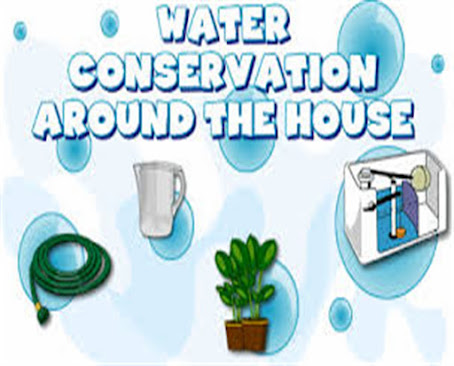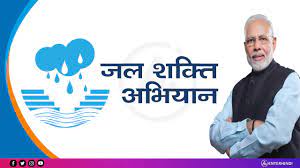How to save your water ?
Water is an essential resource that sustains life on our planet. However, with increasing demands and climate change, it has become crucial for us to conserve water. By making simple changes to our daily habits, we can significantly reduce water waste and contribute to the preservation of this precious resource. In this blog post, we will explore 25 easy ways to save water and make a positive impact on our environment.
Fix Leaks: Promptly repair any leaking faucets, toilets, or pipes in your home. A small leak can waste hundreds of gallons of water over time.
Install Low-Flow Fixtures: Replace old faucets, showerheads, and toilets with low-flow alternatives. These fixtures use less water without compromising functionality.
Take Shorter Showers: Aim to reduce your shower time by a few minutes. A 5-minute shower can save up to 25 gallons of water compared to a 10-minute shower.
Turn Off the Tap: Avoid leaving the tap running while brushing your teeth, shaving, or washing dishes. This simple step can save gallons of water every day.
Use a Bucket: Place a bucket in your shower to collect excess water while it warms up. Use this water for plants, cleaning, or flushing toilets.
Opt for a Water-Efficient Washing Machine: When purchasing a new washing machine, choose a model with a high Water Factor (WF) rating. It will use less water per load.
Run Full Loads: Whether it's the dishwasher or washing machine, make sure to run full loads. This maximizes water efficiency and reduces water waste.
Much Your Garden: Apply a layer of mulch around your plants to retain moisture in the soil. This reduces the need for frequent watering.
Water Plants Efficiently: Water your plants early in the morning or late in the evening when evaporation rates are lower. Direct the water to the plant roots instead of overhead sprinklers.
Collect Rainwater: Install a rain barrel or container to collect rainwater from your roof. Use this water for watering plants or cleaning.
Use a Broom: Instead of using a hose, sweep outdoor areas like driveways and sidewalks with a broom. It saves water and gets the job done.
Check for Underground Leaks: Periodically inspect your irrigation system for leaks, broken sprinkler heads, or underground pipe leaks. Repair them promptly to prevent water loss.
Adjust Sprinkler Settings: Ensure your sprinklers are watering the intended areas and not sidewalks or pavement. Adjust the settings to avoid water waste.
Use Drip Irrigation: Consider installing drip irrigation systems for your garden. These systems deliver water directly to the plant roots, minimizing evaporation and runoff.
Harvest and Reuse Greywater: Collect and reuse water from activities like washing dishes or laundry. Use this water for flushing toilets or watering plants.
Choose Native Plants: Opt for drought-resistant plants that are native to your region. They require less water and are better adapted to local conditions.
Insulate Pipes: Insulate hot water pipes to reduce the time it takes for water to heat up. This saves both water and energy.
Fix Toilet Leaks: A leaking toilet can waste a significant amount of water. Add a few drops of food colouring to the tank and if the color appears in the bowl without flushing, it's time for a repair.
Don't Overwater: Learn the specific watering needs of your plants and avoid overwatering. Excess water can lead to root rot and other problems.
Educate Children: Teach kids about the importance of water conservation andEducate Children: Teach kids about the importance of water conservation and involve them in water-saving practices. Encourage them to turn off faucets and report any leaks they notice.
Use a Pool Cover: If you have a swimming pool, cover it when not in use. This prevents evaporation and reduces the need for frequent refilling.
Opt for Xeriscaping: Consider xeriscaping your yard, which involves landscaping with drought-resistant plants and using water-efficient design techniques. This reduces the need for excessive watering.
Monitor Your Water Bill: Keep an eye on your water bill to track your usage. Any sudden spikes could indicate leaks or wasteful habits that need to be addressed.
Harvest Condensation: Place a container under your air conditioning unit's condensation drainpipe to collect the water that usually goes to waste. Use this water for plants or other non-potable purposes.
Spread Awareness: Share your water-saving tips with friends, family, and colleagues. Raise awareness about the importance of water conservation and inspire others to adopt water-saving practices.
Realstory about waer save
In the arid region of Rajasthan, India, lies a village named Rajsamand. This village faced severe water scarcity and struggled to meet the water needs of its residents. However, a remarkable initiative led by a group of women transformed the water situation and became an inspiring story of water conservation.
The women of Rajsamand, led by Rajni, recognized the urgency of the water crisis and the impact it had on their daily lives. They decided to take matters into their own hands and formed a collective called the "Jal Sahelis," meaning "Water Friends."
The Jal Sahelis started by conducting surveys to understand the water usage patterns and challenges faced by the villagers. They discovered that a significant amount of water was wasted due to leaky taps, inefficient irrigation practices, and lack of awareness about conservation methods.
With determination and community support, the Jal Sahelis initiated a series of transformative steps. They organized workshops and awareness campaigns to educate the villagers about water conservation techniques. They taught them how to fix leaky taps and encouraged the use of water-efficient fixtures.
The women also collaborated with local authorities to implement rainwater harvesting systems. They constructed structures such as rooftop rainwater catchment systems, check dams, and percolation pits to capture and store rainwater. These initiatives helped replenish the groundwater and provided a sustainable source of water for the villagers.
To further address the issue of water wastage, the Jal Sahelis promoted the use of traditional water conservation methods like "khadins" and "johads." These structures captured rainwater and allowed it to percolate into the ground, replenishing the underground aquifers.
The impact of the Jal Sahelis' efforts was profound. The village started witnessing a significant increase in the water table, and the availability of water became more consistent throughout the year. With improved access to water, the villagers were able to meet their daily needs, cultivate crops, and support their livestock.
The success of the Jal Sahelis didn't stop within their own village. Their story gained attention, and neighboring communities sought their guidance and support in implementing similar water conservation practices. The Jal Sahelis became ambassadors of change, spreading awareness about the importance of water conservation across the region.
The efforts of the women of Rajsamand not only transformed their own village but also inspired a larger movement towards water conservation in rural India. Their story serves as a testament to the power of grassroots initiatives and community-led actions in addressing pressing environmental challenges.
The women of Rajsamand, through their determination, knowledge, and collective spirit, have created a lasting impact on water conservation. Their story continues to inspire countless individuals and communities to take action, demonstrating that sustainable solutions to water scarcity are possible even in the harshest of environments.
About "Jal Shakti Abhiyan
For instance, the Indian government's "Jal Shakti Abhiyan" campaign, launched in 2019, has focused on water conservation and has led to increased awareness and adoption of water-saving practices. The campaign has encouraged communities to implement rainwater harvesting systems, restore water bodies, and promote efficient water use in agriculture, among other measures.
Similarly, state-level programs and community-led initiatives have also contributed to water savings by implementing water conservation measures tailored to local needs and conditions.
It is important to note that water savings can vary greatly depending on the specific location, the scale of the initiatives, and the participation and effectiveness of the implemented measures. Additionally, water savings can be influenced by factors such as climatic conditions, population density, and the level of water stress in different regions.
To obtain accurate and up-to-date data on the total water savings in India per year, it would be best to refer to reports and studies conducted by water management authorities, research institutions, or government agencies specializing in water conservation and resource management in India.
Conclusion:
Conserving water is a responsibility we all share. By implementing these 25 simple yet effective strategies, we can make a significant impact on water conservation efforts. Remember, every drop counts, and together, we can ensure a sustainable future where water remains abundant for generations to come. So let's take action today and save water for a better tomorrow.





Comments